Filter by

Studies in Jaina History and Culture
The last ten years have seen interest in Jainism increasing, with this previously little-known Indian religion assuming a significant place in religious studies. Studies in Jaina History and Culture breaks new ground by investigating the doctrinal differences and debates amongst the Jains rather than presenting Jainism as a seamless whole whose doctrinal core has remained virtually unchanged th…
- Edition
- -
- ISBN/ISSN
- 9781134235476
- Collation
- -
- Series Title
- -
- Call Number
- -

A New Science for Future Climate Impact Modeling and the Quest for Digital O…
Building on concepts from Science & Technology Studies, Simon David Hirsbrunner investigates practices and infrastructures of computer modeling and science communication in climate impact research. The book characterizes how scientists calculate future climate risks in computer models and scenarios, but also how they circulate their insights and make them accessible and comprehensible to others…
- Edition
- -
- ISBN/ISSN
- 9783839452653
- Collation
- -
- Series Title
- -
- Call Number
- -
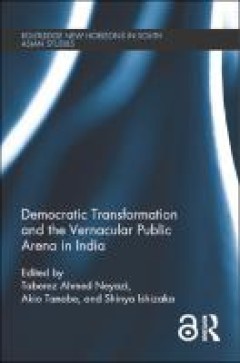
Democratic Transformation and the Vernacular Public Arena in India
Since the structural change in Indian society that began in the 1990s - the result of the liberalisation of the economy, devolution of power, and decentralisation of the government–an unprecedented, democratic transformation has been taking place. This has caused the emergence of unexpected coalitions and alliances across diverse castes, classes, and religious groups according to the issues i…
- Edition
- -
- ISBN/ISSN
- 9781317694038
- Collation
- -
- Series Title
- -
- Call Number
- -

Feminist Existentialism, Biopolitics, and Critical Phenomenology in a Time of…
This book explores the personal value of healthy behavior, arguing that our modern tendency to praise or blame individuals for their health is politically and economically motivated and has reinforced growing health disparities between the wealthy and poor under the guise of individual responsibility. We are awash in concerns about the state of our health and recommendations about how to improv…
- Edition
- -
- ISBN/ISSN
- 9781000480610
- Collation
- -
- Series Title
- -
- Call Number
- -
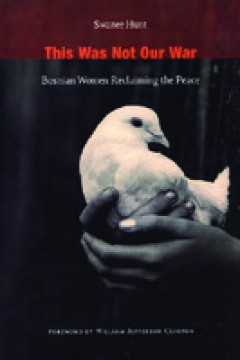
This Was Not Our War
"Replacing tyranny with justice, healing deep scars, exchanging hatred for hope . . . the women in This Was Not Our War teach us how."—William Jefferson Clinton This Was Not Our War shares amazing first-person accounts of twenty-six Bosnian women who are reconstructing their society following years of devastating warfare. A university student working to resettle refugees, a paramedic who foun…
- Edition
- -
- ISBN/ISSN
- 9780822333555
- Collation
- -
- Series Title
- -
- Call Number
- -
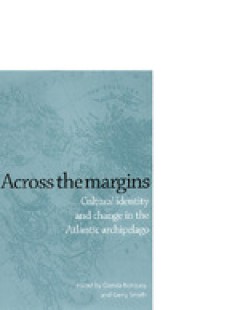
Across the margins: Cultural identity
Across the margins offers a comparative, theoretically informed analysis of the cultural formation of the Atlantic Archipelago. In its overall conception and in specific contributions (including an introductory essay), this collection demonstrates the benefits of working across the disciplines of history, geography, literature and cultural studies, but also presents new configurations of cultur…
- Edition
- -
- ISBN/ISSN
- 9780719057496
- Collation
- -
- Series Title
- -
- Call Number
- -
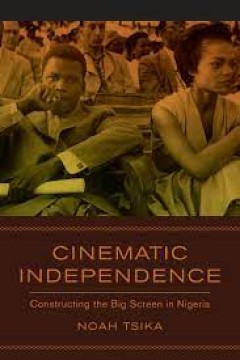
Cinematic Independence Constructing the Big Screen in Nigeria
Cinematic Independence traces the emergence, demise, and rebirth of big-screen film exhibition in Nigeria. Film companies flocked to Nigeria in the years following independence, beginning a long history of interventions by Hollywood and corporate America. The 1980s and 1990s saw a shuttering of cinemas, which were almost entirely replaced by television and direct-to-video movies. However, after…
- Edition
- -
- ISBN/ISSN
- 9780520386105
- Collation
- -
- Series Title
- -
- Call Number
- -

Suburban Urbanities
Suburban space has traditionally been understood as a formless remnant of physical city expansion, without a dynamic or logic of its own. Suburban Urbanities challenges this view by defining the suburb as a temporally evolving feature of urban growth. Anchored in the architectural research discipline of space syntax, this book offers a comprehensive understanding of urban change, touching on th…
- Edition
- -
- ISBN/ISSN
- 9781910634158
- Collation
- -
- Series Title
- -
- Call Number
- -
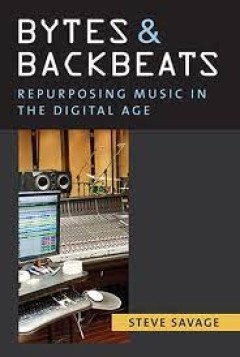
Bytes and Backbeats Repurposing Music in the Digital Age
From Attali's "cold social silence" to Baudrillard's hallucinatory reality, reproduced music has long been the target of critical attack. In Bytes and Backbeats, however, Steve Savage deploys an innovative combination of designed recording projects, ethnographic studies of contemporary music practice, and critical analysis to challenge many of these traditional attitudes about the creation and …
- Edition
- -
- ISBN/ISSN
- 9780472901180
- Collation
- -
- Series Title
- -
- Call Number
- -

High-Tech Trash Glitch, Noise, and Aesthetic Failure
High-Tech Trash analyzes creative strategies in glitch, noise, and error to chart the development of an aesthetic paradigm rooted in failure. Carolyn L. Kane explores how technologically influenced creative practices, primarily from the second half of the twentieth and first quarter of the twenty-first centuries, critically offset a broader culture of pervasive risk and discontent. In so doing,…
- Edition
- -
- ISBN/ISSN
- 9780520974494
- Collation
- -
- Series Title
- -
- Call Number
- -
 Computer Science, Information & General Works
Computer Science, Information & General Works  Philosophy & Psychology
Philosophy & Psychology  Religion
Religion  Social Sciences
Social Sciences  Language
Language  Pure Science
Pure Science  Applied Sciences
Applied Sciences  Art & Recreation
Art & Recreation  Literature
Literature  History & Geography
History & Geography